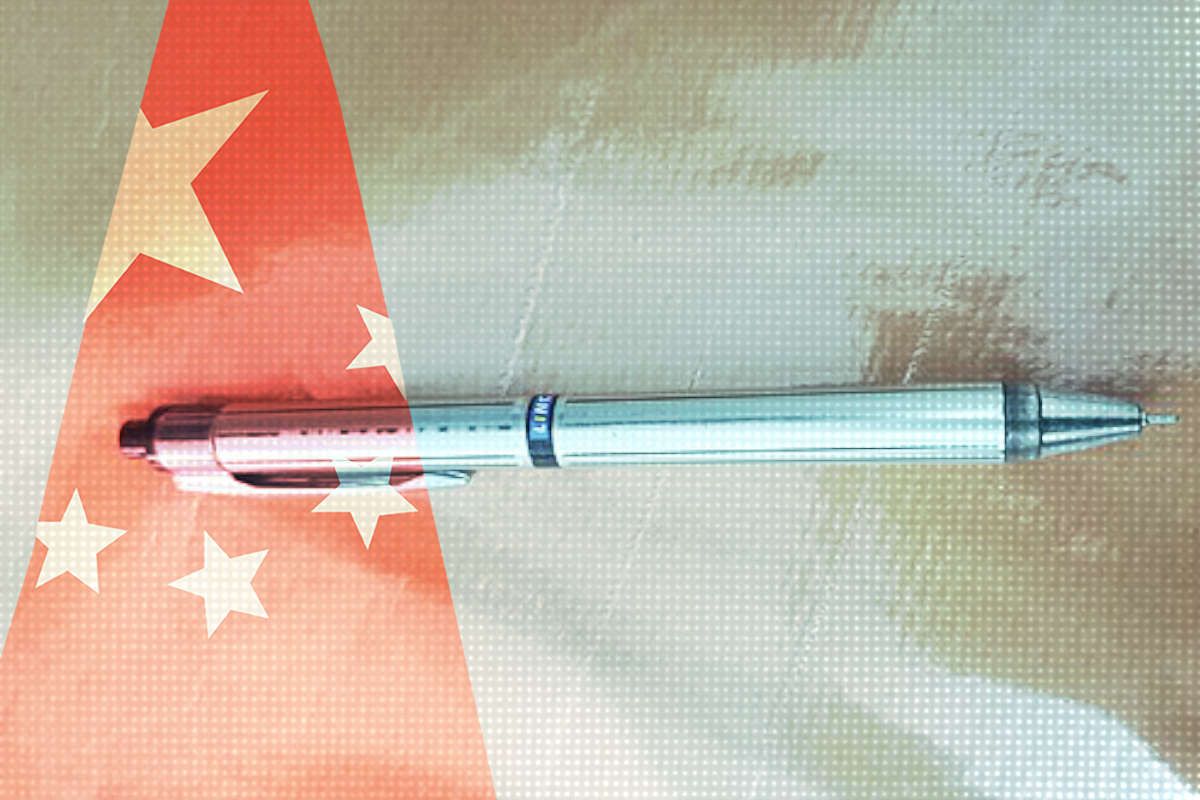Headlines and Hashtags
Reading Between the Crowds

Protests in Minsk, Belarus, in 2020. Image by Max Katz available at Wikimedia Commons under CC license.
Earlier this week, I looked at how party-state media in China have been flagrantly one-sided in their reporting of the ongoing protests in Belarus, clearly standing with embattled President Alexander Lukashenko. Though a small-scale rally in support of the Belarusian leader over the weekend was dwarfed by large-scale demonstrations calling for his ouster, a headline in the official Xinhua News Agency on Monday read: “Large-scale rallies held in Belarusian capital to support the government.”
Given the widespread propagation of this cynically twisted version of events, combined with determined censorship of international coverage, one might suppose Chinese readers have little choice but to swallow the official spin. Outside perhaps a handful of stories from the likes of Caixin Media, which reported (behind its paywall) on Monday that opposition demonstrations “surpassed 100,000,” the pro-Lukashenko narrative has seemed to dominate.
But we cannot forget that despite layer upon layer of control, China’s information landscape remains complex, and acts of dissonance and creative resistance — from the oblique to the audacious — can be found for those who care to look. Today we have a delightful example in an article posted by the WeChat public account “Lao Yu Chui Niupi” (老鱼吹牛皮) that looks more critically at official news coverage of the demonstrations in Belarus.
The article does not directly criticize China Central Television for its clearly misleading suggestion this week that “huge street demonstrations are held in Minsk in support of the government.” It does, however, offer a knowing wink to the reader as it shows rather convincingly on the basis of photographic evidence that the pro-Lukashenko rally over the weekend was dwarfed by opposition demonstrations.
Turning to Shanghai’s Dragon Television, operated by the state-owned Shanghai Media Group, the post is more direct, noting that the network even mis-identified footage of opposition demonstrations in Minsk as showing pro-government demonstrators.
The “Lao Yu Chui Niupi” story remains on WeChat, but can also be found archived over at China Digital Times (just in case it disappears)
I include a translation of the article below.
_____________________
Is Dragon TV Trying to Fool Me About the Belarusian Language?
In recent days, Belarusian citizens have taken to the streets in protest because they are dissatisfied with the results of the recent election and suspect that Lukashenko falsified [the ballots]. Meanwhile, Lukashenko has been very busy these days, asking his old pal Putin for assistance, and then calling his own supporters out onto the streets.
In order to better understand the background, you can read my previous article, “Is Putin’s Close Buddy Finished?”
But an awkward picture has emerged as massive crowds have taken to the main square in Minsk, the capital of Belarus, to oppose Lukashenko, contrasting with sparse groups in support of the leader. The awkward picture looks essentially like this:
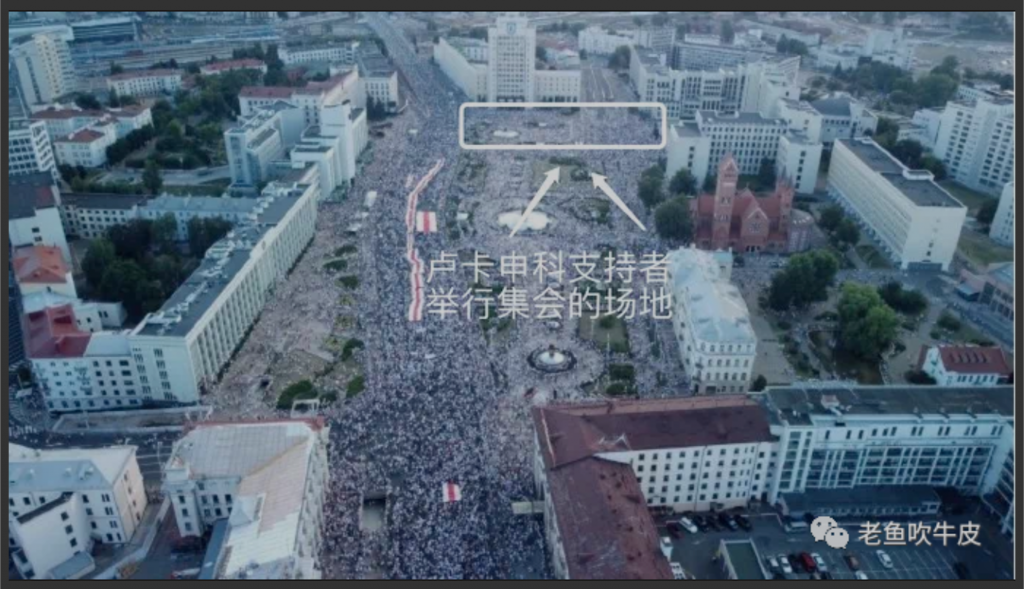
Some might wish to ask how I can tell from the image which are crowds opposing Lukashenko, and which are supporting him? Never fear, we will come back to this in time.
Even though the nation of Belarus is quite far from us [in China], our country’s media must of course report on such a major story when it unfolds. And so yesterday we had this news from a number of television stations.
First, from China Central Television:

Hmm. Many people no doubt saw this. In fact, there is some truth to what CCTV says here. In fact there were street demonstrations in support of Lukashenko, though the idea of using “street demonstrations” to voice support for leaders is a somewhat strange concept. [CMP NOTE: What the author neglects to note, likely as a means of not obviously crossing the line with content monitors, is that CCTV is in fact misleading viewers by mentioning only demonstrations in support of the government. It is not technically untrue that there were such demonstrations, but anti-government rallies and their overwhelming size are a more sensitive matter in China.]
Next we have this image from [Shanghai’s] Dragon Television (东方卫视):
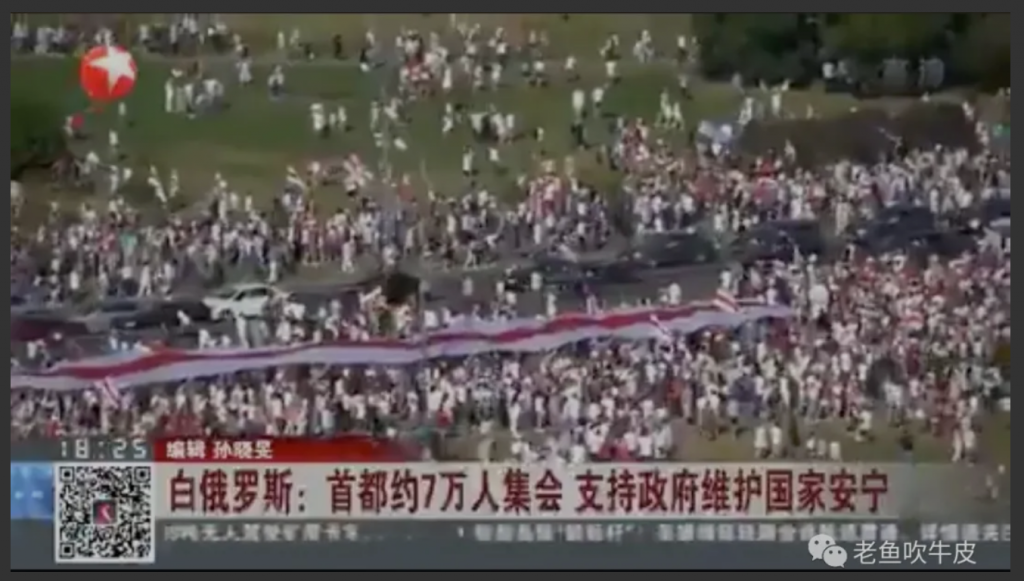
Now this is interesting. The scenes following on the channel include a few close-up shots of groups of demonstrators, but anyone who understands a bit of Belarusian could easily detect the problem.
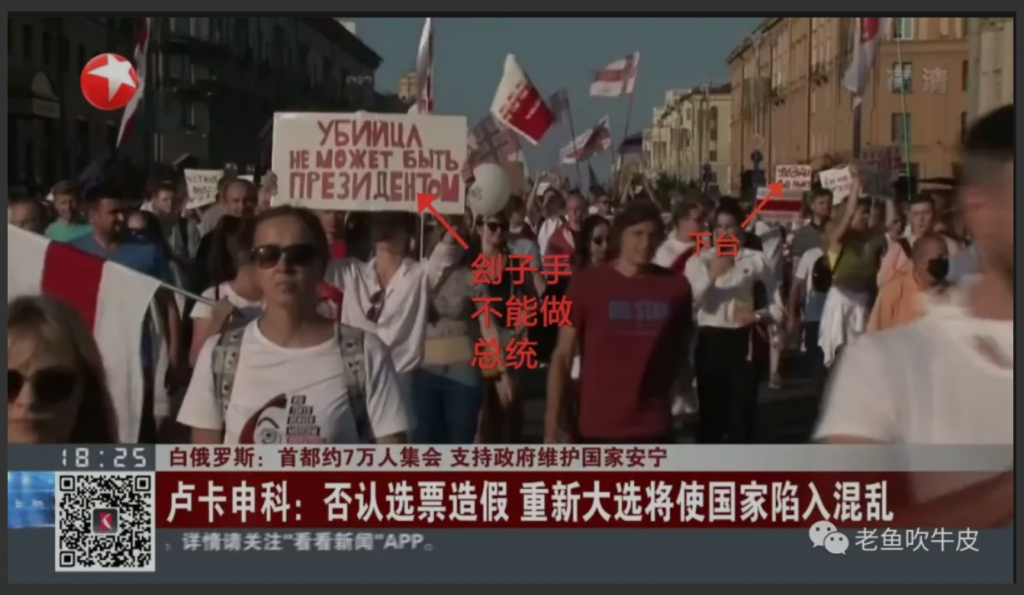
Are these [placards] not criticisms of Emperor Lukashenko? They refer to him as a “murderer.” And they call on him to step down. Mao Zedong once said that in this world, conscientiousness is to be feared. I have a good friend who went and checked [on these slogans] through translation software.
We can give thanks to the power of the internet:
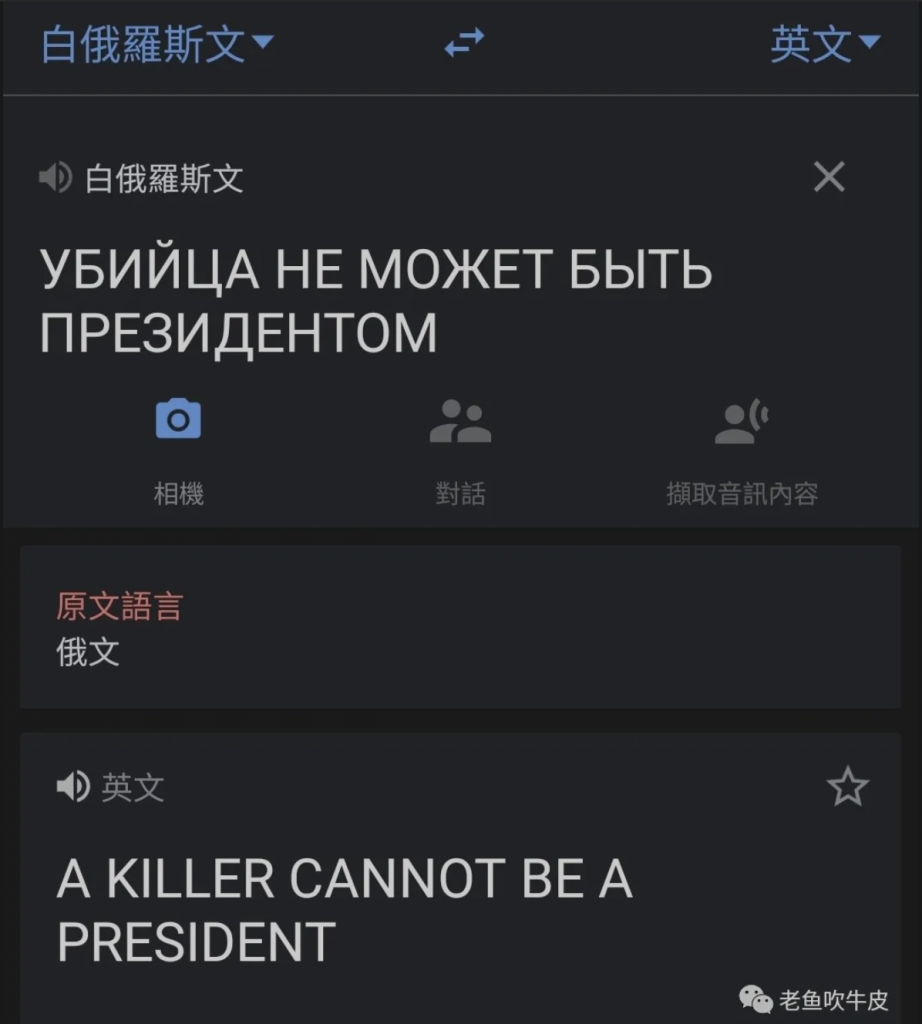
Clearly then, this is a harsh criticism of him [Lukashenko].
SO, Dragon Television has taken footage of the opposition and made it out to be that of the crowd supporting Lukashenko. I would imagine that the editor here, an expert on international news, isn’t without knowledge of foreign languages – so he is certainly pulling the wool over the eyes of those of us who don’t understand Belarusian.
In fact, there is an even easier way to make out which are the Belarusian demonstrators opposing Lukashenko, and which are the ones supporting Lukashenko. And that is to look at the flags they are waving.
For example, those supporting Lukashenko wave this sort of flag:
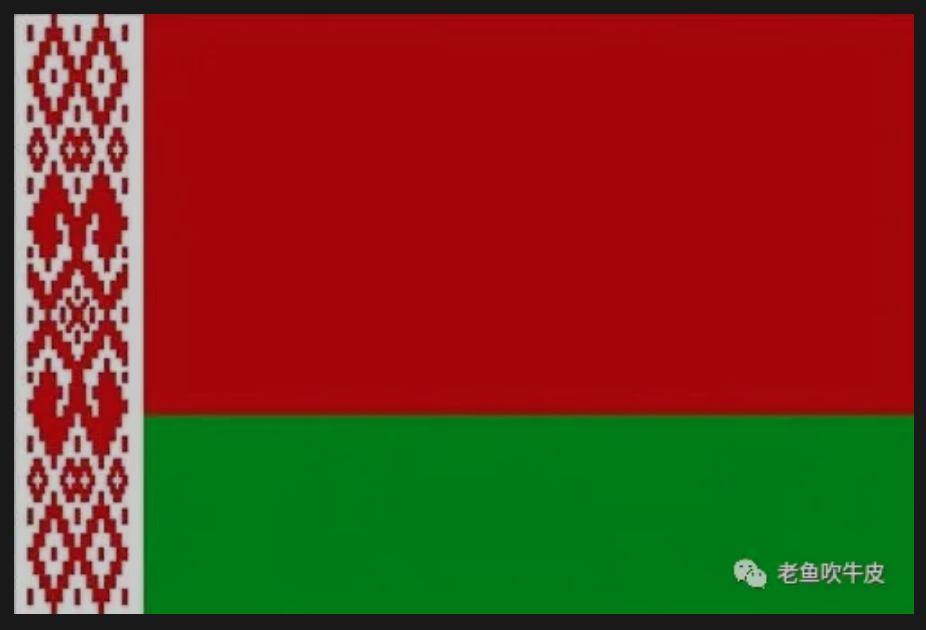
This is the national flag of Belarus, with its classic pattern and bands of red and green. The flag was originally designed in this way to show that the Belarusians are descendants of nomadic Scythians, who later migrated to the Eastern European plains. [NOTE: Readers can find out more about Belarusian flags here].
And so the footage shown on CCTV was also correct:
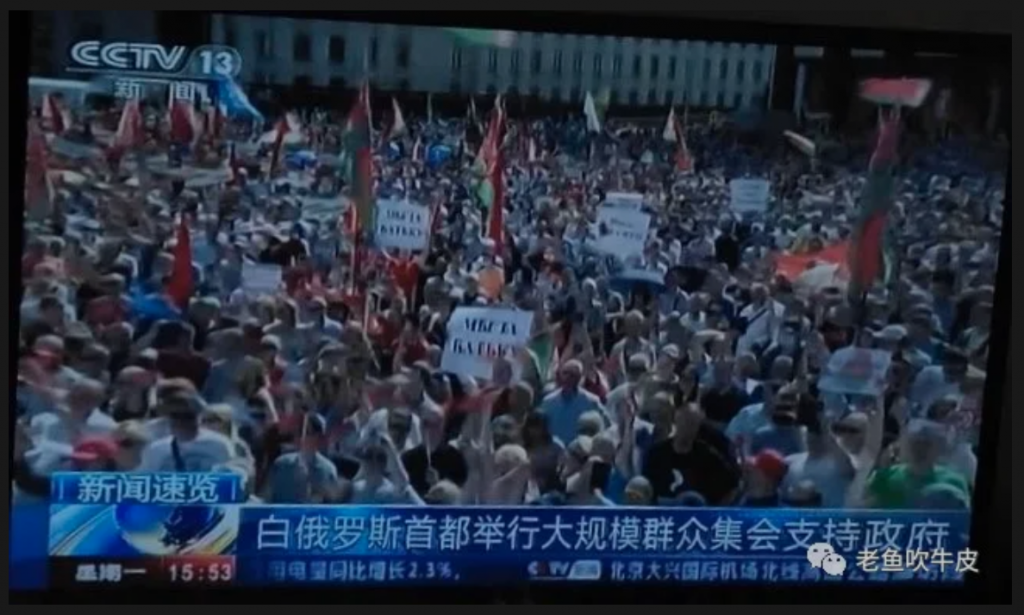
The people in this image [from CCTV] are all hoisting the red-and-green flag, which is the current national flag of Belarus.
The opposition, however, are flying a flag with two white bands and one red, like this:
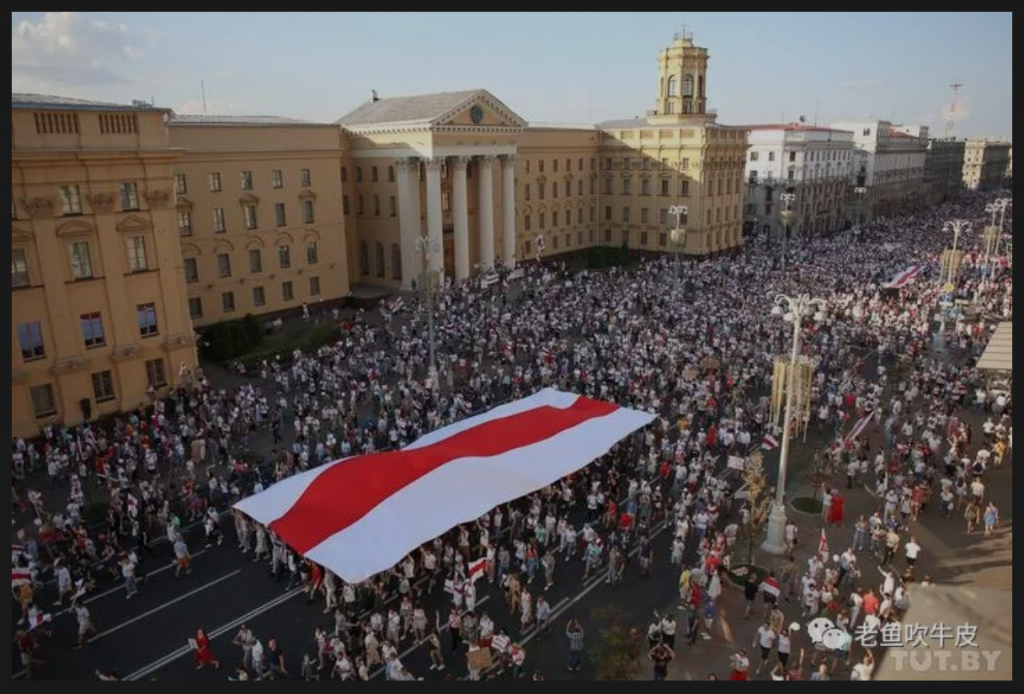
This is the flag of the short-lived Belarusian Democratic Republic of 1918 and the First World War. These colors derive from the historical Grand Duchy of Lithuania, mirroring the current national flag of Lithuania, which is also white and red – because Belarus was once part of the Grand Duchy of Lithuania.
After the Soviet Union collapsed in 1991, this flag was used for a short time by Belarus. The current national flag dates back to 1995, used only after Lukashenko became president. The opposition side uses this [white-red-white] flag to express its rejection of today’s leaders.
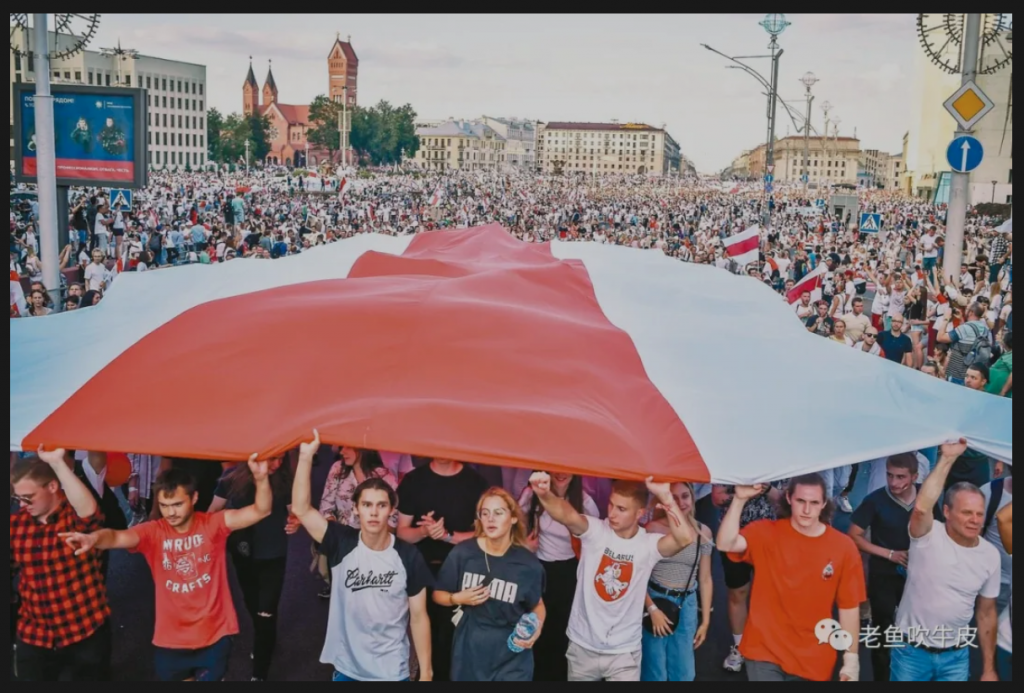
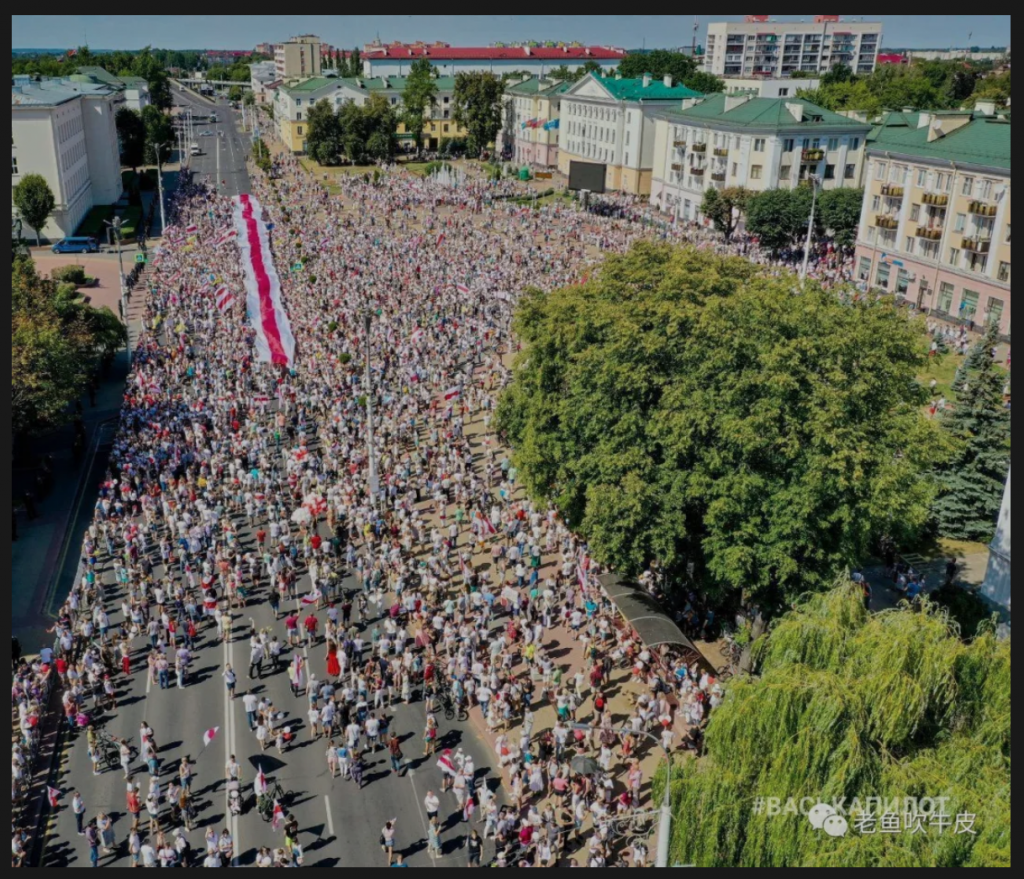
Therefore, from the images above, we can see that Dragon TV has things entirely turned around in its explanation of its footage. It just doesn’t match up [with the facts].
Oh, Dragon TV, you can support Lukashenko if you wish. But as a television station, when you make programs can you not at least show a bit of honesty? Don’t cheat those of us who can’t understand foreign languages. If you continue this way, people might mistakenly think that you are trying for underhanded criticism (高级黑).
Facing the current situation, Lukashenko has remained firm. He has said that the election is already a done deal, and [the opposition] cannot just refuse to accept it. There won’t be new elections “until you kill me,” he said.
The people of Belarus, it seems, are not to be cowed.
As the situation develops, he is now saying he would be prepared to entertain new elections and hand over power if there was a constitutional referendum.



















